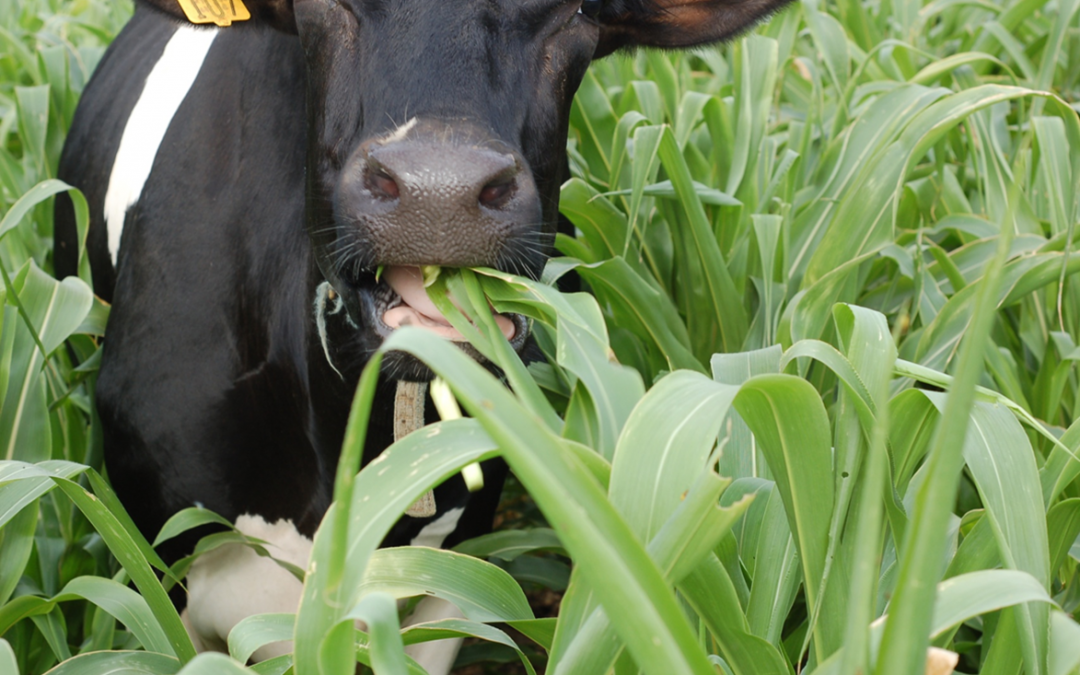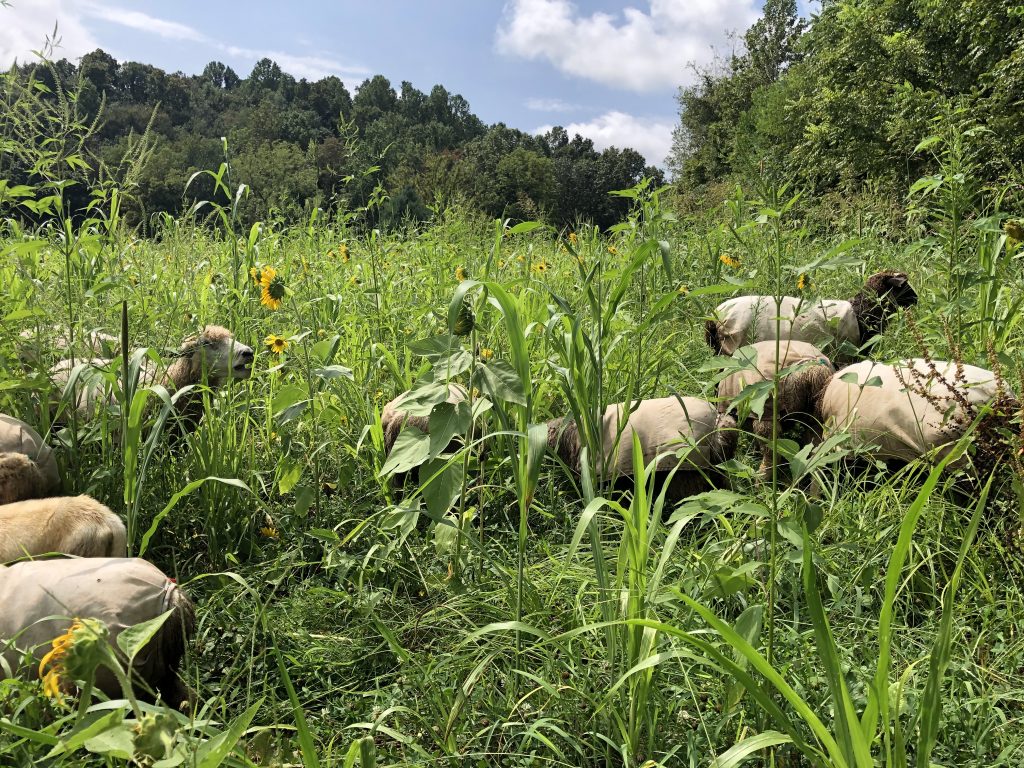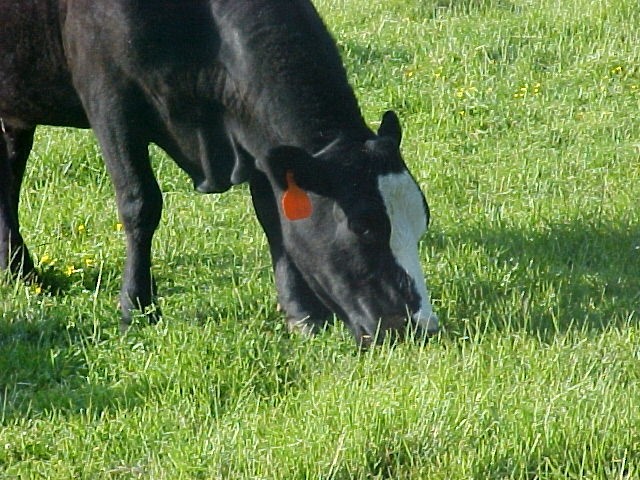
Grazing Annual Cover Crops
“Can we graze cover crops?” The answer is yes, with an “it depends” attached. It depends on soil conditions, the growth stage of the cover cro,; the reason you planted cover crops, and whether you’re involved in a conservation plan or program that requires other criteria. Annual cover crops can be utilized quite well by grazing livestock, and they can also be part of a cropping system that can enhance the soil resource, but if grazed then it has to be managed correctly.
The nutritional values of most cover crops will meet the needs of most grazing livestock. The ability to utilize annuals with grazing livestock allows longer rests periods for pastures, and also the ability to grow more forage, and graze longer reducing the amount of fed feed. Utilizing livestock on a cropland field can also be advantageous for increasing biological activity because of all the added flora of the rumen. The majority of the nutrients that run through a ruminant animal are placed right back onto the ground from where they came. The grazing of slightly more mature material mixed with a lower carbon to nitrogen (C:N) ratio species can help increase soil organic matter and get the nutrients in a more available form for the next crop.
These reasons can be positive as long as the primary purpose of the cover crop is not compromised. Grazing must not cause any additional compaction problems, erosion, and/or rutting, and there must be adequate live plant material left behind. This live plant residual is needed for adequate growth for the primary purpose(s) of the cover crop such as adequate cover for erosion control, winter survival, and adequate leaf area available for termination; sufficient root growth to reduce compaction and recycle nutrients; etc.
Dry or frozen soils are the ideal conditions to graze cover crops. The livestock should not be grazing the cover crop under wet soil conditions unless a large amount (>2 tons/acre) of mature vegetation is present. These larger amounts are normally only accomplished from a summer planting. The key here is to not increase compaction…at all…nor to cause pugging that will cause erosion or hinder no-till planting of the cash crop next spring.
The cover crops also need adequate growth available before any grazing is initiated. The start grazing height will vary some according to the species, but generally you want a minimum of eight (8) inches of growth for most species and rarely do you want to graze it down any lower than four (4) inches. Maintaining adequate live plant residual is critical in keeping the plant growing and serving the intended primary purpose.
Livestock should not be left in any one area for a very long period. Ideally, livestock should be moved or allocated new forage every 1-2 days. Larger allotments can be utilized, but expect slightly less efficiency. Livestock can remove vegetation very fast; keep a keen eye on the cover crops to make sure they are not overgrazed. The cover crop should be checked every day, whether moving the livestock or not.
The best utilization and control is achieved by strip grazing annual cover crops. Strip grazing is allocating out a set amount of forage that you know will meet the needs of the livestock for a set time frame and still maintain the required live plant residual after removing the livestock. This can be achieved with reels of poly-wire and step-in posts. Generally you will want three sets (reel and sufficient posts) for the front fence, the back fence, and the fence of the next move.
If grazing highly digestible forages add some roughage to slow the passage through their rumen enabling them to absorb nutrients. The best solution is to not select only highly digestible, high nitrogen forages for a cover crop when they may be grazed. These highly digestible forages move quite quickly through the livestock’s digestive system when grazed alone. Planting a mix of forages that will provide both fiber and protein in balance is ideal. An example could be mixing a warm season annual grass with a brassica in late summer to be grazed later that fall or early winter after the warm season grass has dried off. Grazing cover crops in the early reproductive stage is the best way to slow the rate of passage through the animal. You can also feed some hay or soyhulls to slow down the rate of passage.
Water should be provided to the grazing livestock and moved on a regular basis to keep them from spending too much time in any one area. Portable tanks and water lines are a good way to do this. Having hydrants or quick couplers located along one side of the field will allow multiple connecting sites.
It is rare to have good soil conditions for grazing throughout the entire fall, winter, and early spring. Generally, do not leave livestock on the field all winter long. They should be moved off the site if soil conditions dictate the need to prevent degradation, even if there is available forage still present. Have a plan to move the livestock off of the field during wet periods, such as moving them to a perennial pasture or sacrifice lot, until ground conditions are okay to continue grazing. Do not feed the livestock any feed or hay out on the cropland field to prevent excessive gathering and trampling. Overused sites will become compacted!
Summer idle ground could also be planted to an annual cover crop mix, then grazed either during the growing period, or stockpiled for fall or winter use.

A cover crop mix to consider for grazing and soil health is:
Species Pounds/AC
Cereal Rye 40
Wheat 26
Crimson Clover 4
Turnips 1
Radish 2
73
The rate of wheat could be increased to as much as 100 lb/ac. If you are real adventurous you can add a couple of pounds of buckwheat and one pound of sunflowers. The buckwheat and sunflowers will freeze out at first frost. Perennials properly managed build soil better and more cost effectively than annuals it is typically only recommended to seed annuals in fields with less than 50% desirable stand of cool season perennials like tall fescue because money spent on fertilizer instead of seed would yield more return. The best pasture to drill cool season annuals in is warm season pastures like bermudagrass, crabgrass, dallisgrass and johnsongrass pastures.
